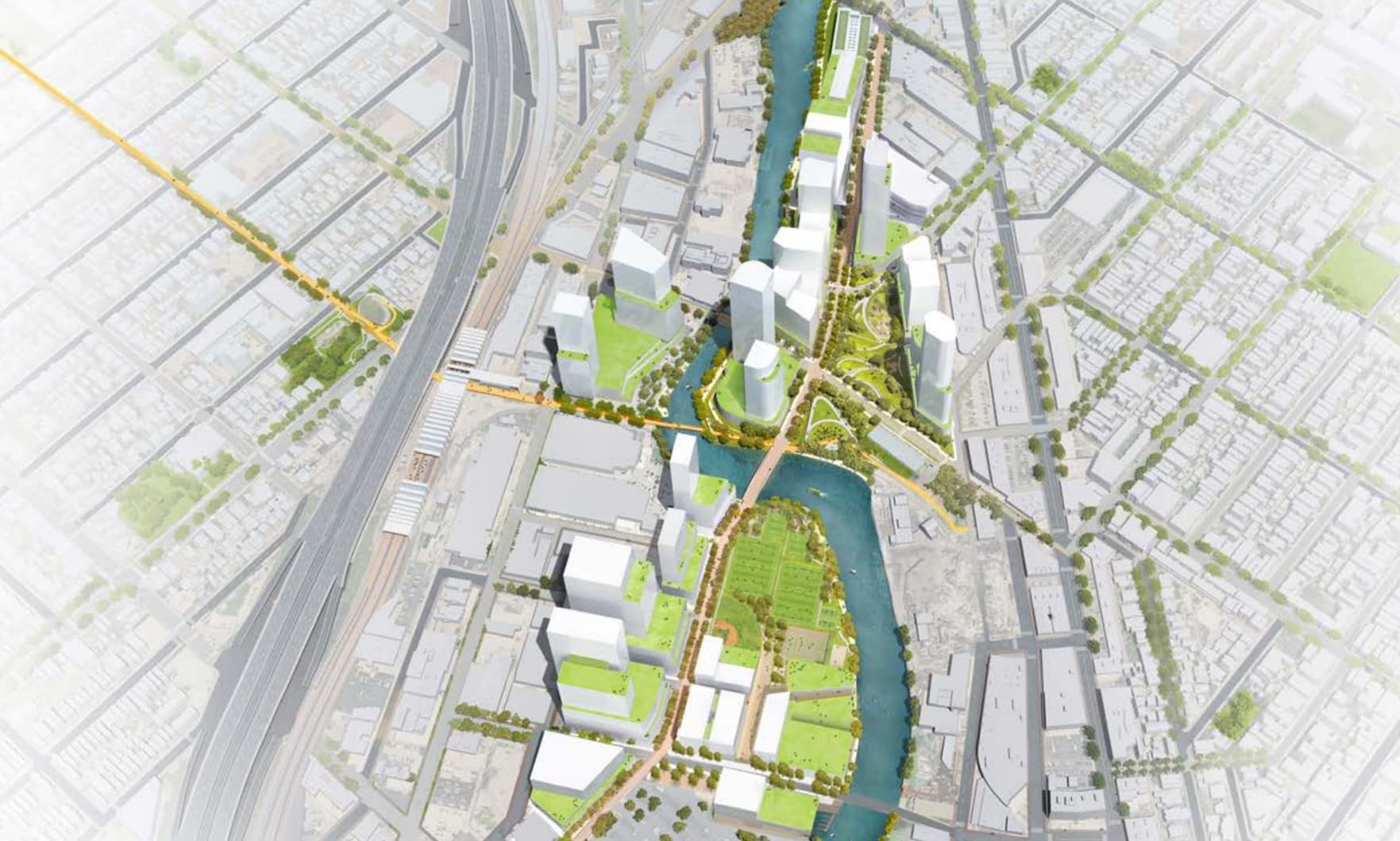For more than 100 years, A. Finkl & Sons Steel operated out of a 22-acre lot along the Chicago River. But after the steel mill was demolished in 2012, the massive site sat empty for years.
In 2019, the Chicago City Council approved plans for a larger replacement development: Lincoln Yards, a $6 billion community by Sterling Bay. The firm aimed to use 53 acres of industrial river space to connect some of Chicago’s most popular areas, like Bucktown, Wicker Park and Lincoln Park, and imagined Lincoln Yards as a mixed-use master plan with 11 acres of parkland, 6,000 residential units plus retail and entertainment attractions.
Four years later though, the site is still — mostly — empty. And Sterling Bay is seeking new investors.

A Lincoln Yards rendering, courtesy of Sterling Bay
Sterling Bay technically broke ground on Lincoln Yards in 2021 and, at that time, construction was projected to last 10 years. At this point, only the community’s Life Sciences building is complete, although the city recently announced the extension of the 606’s Bloomingdale Trail to Elston Avenue is officially moving forward with construction set to begin in 2025.
The 606 extension was one of many public infrastructure initiatives included when the master plan was approved. Others include the creation of a Throop Street bridge, intersection upgrades, river improvements, a new Metra station and various parks. These projects would be paid for by Sterling Bay initially, then reimbursed through the city’s $1.3 billion Cortland and Chicago River tax-increment financing (TIF) district, which was created when Lincoln Yards was approved in April 2019.
By May 2023, however, Sterling Bay’s relationship with local government appeared strained. Less than a week before Mayor Lori Lightfoot left office, Sterling Bay CEO Andy Gloor told Bloomberg that the exiting politician “put a brake on our entire project,” delaying the project by three years.
Gloor went on, saying, “She fought the development, which is so puzzling to me because the economic impact in terms of construction jobs, permanent jobs and the ability to compete with some other cities. It’s in the $8 [billion] to $10 billion [range], if you add it all up.” He also expressed his excitement to collaborate with Mayor Brandon Johnson who, for his part, has stated his support for Chicago developments in general but remained mostly quiet about Lincoln Yards specifically.
Now, two months after that Bloomberg interview, Sterling Bay is on the hunt for new investors. A representative from the company, Julie Goudie, confirmed this with Chicago Agent, saying that Sterling Bay is currently “recapitalizing” Lincoln Yards.
“We believe that a Chicago-based investor is the right partner to help us bring all the incredible opportunities that Lincoln Yards presents to life, including tens of thousands of local jobs, acres of revitalized riverfront, historic amounts of affordable housing and billions of dollars in economic output,” Goudie said. “We remain committed to delivering these benefits to the public as soon as possible.”
One potential funding source? The Chicago Teachers’ Pension Fund (CTPF). Gloor pitched the opportunity to commit $300 million during a May 23 meeting with the investment group, Crain’s reported in June, calling it an “unbelievable, generational opportunity to invest in the city.” The pitch surprised many Chicagoans, as the pension board is tied to the Chicago Teachers Union (CTU) — one of Lincoln Yards’ community critics.
During the teachers’ strike of 2019, CTU members marched at the Lincoln Yards site and the union released a statement that read, “We are targeting Lincoln Yards because it’s being funded in part by TIF money that should be going to our schools.”
At this point, though, CTPF Chief Investment Officer Fernando Vinzons says the potential deal is purely “conceptual.” The latest progress remains centered around the 606 extension.
Though funding for that project is not finalized either, a public meeting on Aug. 2 at Lincoln Yards’ life sciences center promises more details.